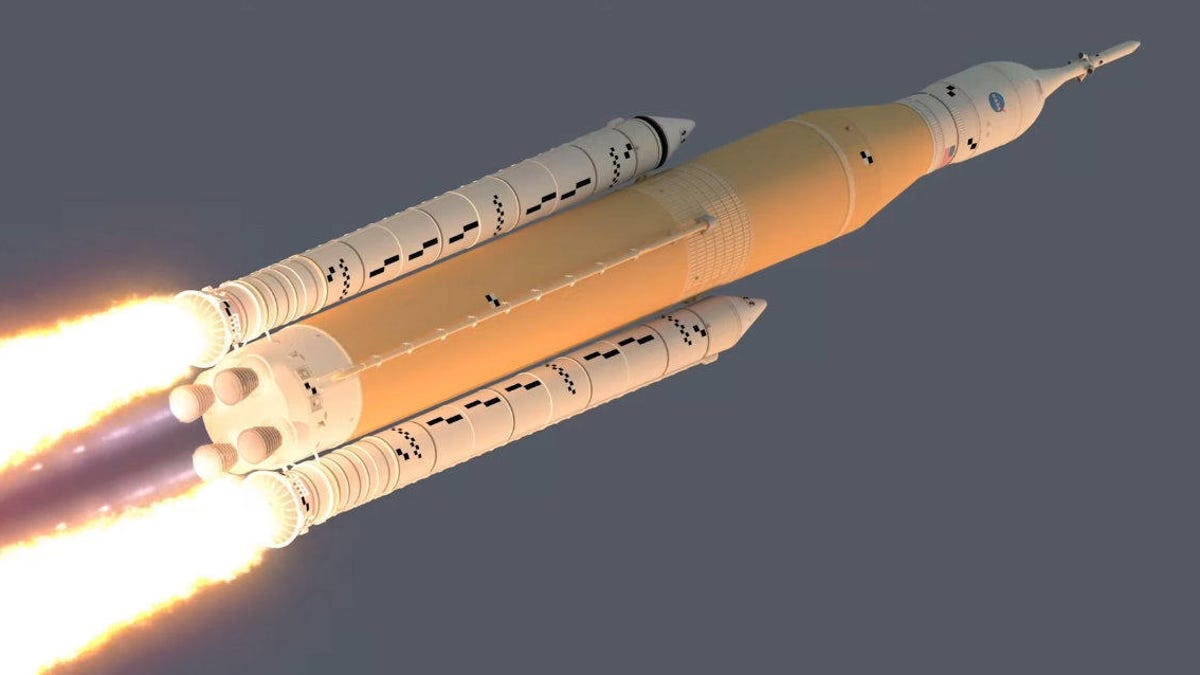NASA head rules out SpaceX rockets for 2024 moon mission
The space agency's administrator says it absolutely plans to return on the back of its own launchers.

NASA is still working on the Space Launch System as part of its moon ambitions.
NASA administrator Jim Bridenstine said Thursday there's only one way to get the first female astronaut to the moon's south pole by 2024, and it won't involve Elon Musk's help.
"I want to be clear about SLS and Orion... SLS and Orion is the only system that gives us any chance of getting there in 2024," he said. "We've looked at everything, we've considered everything and SLS and Orion, that is the system. And once it's developed, we will use it over and over and over again."
NASA's plan, newly rebranded as "Artemis," has always been to use SLS (Space Launch System) rockets and its sister Orion crew capsule to return humans to deep space, but the system isn't ready yet. When the Trump administration moved up the moon mission by four years, Bridenstine and NASA considered alternatives.
Bridenstine has previously floated the idea that Orion could be launched atop a commercial rocket like a SpaceX Falcon Heavy, but in recent weeks NASA has returned the focus to getting SLS, which would become the most powerful rocket in existence, up and running.
NASA's most clear doubling down on SLS yet came during Bridenstine's speech Thursday at Florida Institute of Technology, which centered on the announcement of the first contractor to work on the so-called "lunar gateway," a planned orbiting waypoint around the moon. Maxar, which has also built parts of the International Space Station, will build the power and propulsion unit (basically the main motor) of the lunar gateway.
Bridenstine went on to reiterate NASA's plans to ready a bare-bones version of the gateway and a lunar lander for the 2024 mission. He touted the reusability of both designs, while also acknowledging, a little ironically, that SLS rockets are not reusable, like a Falcon Heavy.
"We are trading a little bit of reusability for speed," he said.
The hope is that NASA could launch the mission newly dubbed "Artemis 1" using an SLS and Orion around the moon without a crew about a year from now, followed by Artemis 2, a crewed launch around the moon in 2022, and Artemis 3, the eventual landing in 2024.
However some major hurdles, including the project's legacy of years of delays and cost overruns, stand in the way of keeping that schedule. Just this week additional funding for Artemis hit a roadblock in Congress.
Meanwhile, SpaceX continues to plug away at readying its own moon rocket, Starship. But not even Musk's timeline for getting to the moon is as aggressive as the one NASA is currently pursuing.

